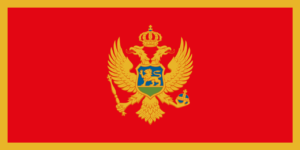The country, now called Montenegro, was first given that name in the 15th century. The area resisted Ottoman occupation for many years. From 1500 to his 1800, Montenegro became a theocracy, with rulers becoming bishops and governments closely tied to religion. In 1852 the government separated from the church.
After World War I, Montenegro became part of the Kingdom of Serbs, Croats, Slovenes, and eventually the State of Yugoslavia. When Yugoslavia became communist and effectively part of the Soviet Union, so did Montenegro. After the collapse of the Soviet Union, Montenegro became part of a federation with Serbia. In 2006 Montenegro declared independence and became an independent country.
| Capital | Podgorica (administrative capital) |
| Population | 626,422 (Source: 2023 worldometer) |
| Major Cities | Podgorica (capital), Bijelo Polje, Pljevlja, Niksic, Budva, Kotor, Herceg Novi, Ulcinj |
| Borders | Adriatic Sea and Croatia (southwest), Bosnia and Herzegovina (northwest), Serbia (northeast), Kosovo (east), and Albania (southeast) |
| Gross Domestic Product (GDP) | $6,095,978,868 (2022 worldometer) |
| Currency | euro (EUR) |

Montenegro Major Industries: steelmaking, agricultural processing, consumer goods, tourism
Montenegro Agricultural Products: grains, tobacco, potatoes, citrus fruits, olives, grapes; sheepherding; commercial fishing negligible
Montenegro Natural Resources: bauxite, hydroelectricity
Montenegro Major Exports:
Montenegro Major Imports:
Total Size of Montenegro: 13,812 km² (source: 2022 wikipedia)
Geographical Low Point of Montenegro: Adriatic Sea 0 m
Geographical High Point of Montenegro: Bobotov Kuk 2,522 m
Climate of Montenegro: Mediterranean climate, hot dry summers and autumns and relatively cold winters with heavy snowfalls inland
General Terrain of Montenegro: highly indented coastline with narrow coastal plain backed by rugged high limestone mountains and plateaus
World Region or Continent of Montenegro: Europe
Geographical Coordinates: 42 30 N, 19 18 E
Montenegro Government Type: republic
Montenegro Nationality: Montenegrin(s)
Montenegro National Holiday: National Day, 13 July
Montenegro Independence: 3 June 2006 (from Serbia and Montenegro); note – a referendum on independence was held 21 May 2006
Montenegro National Symbol: double-headed eagle
Montenegro National Anthem or Song: Oj, svijetla majska zoro (Oh, Bright Dawn of May)
Montenegro Languages Spoken: Serbian (Ijekavian dialect – official)
Montenegro Religions: Orthodox, Muslim, Roman Catholic
Montenegrin is the official language here, although it is spoken by only a third of the population. The mother tongue of most residents is Serbo-Croatian, which is very similar to Serbo-Croatian.
Montenegro is one of the greenest countries in the world, with over 40% of its land covered in trees (interesting facts about trees).
This is her second deepest canyon in the world and her second deepest after the Grand Canyon in the United States.
Montenegro also has her 14 islands in addition to the mainland. Residents of Montenegro have the highest average height of any European country.
Local law allows taxi drivers to transport drunk passengers only in the back seat of the vehicle.
There are almost no movie theaters here. There are few theaters.
The water in most rivers in Montenegro is so clean that you can drink it without prior purification (interesting facts about rivers). There is no “McDonald’s” in Montenegro. Not even one.
There is a unique bachelor village called “Konyushi” where stubborn opponents of marriage gather.
The Montenegro city of Kotor has the narrowest street in the world, about half a meter wide. And in Podgorica, the capital, there is the shortest street with a single house and only 30 meters long. The village of Orgen in Montenegro lies on the slopes of the mountain of the same name, the wettest place in Europe.
The Bojana River, unique to Montenegro, flows in both directions simultaneously.
More plant species grow on the territory of Montenegro than in all other European countries combined.

